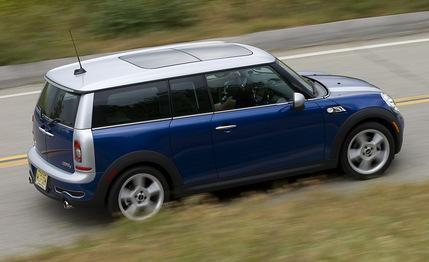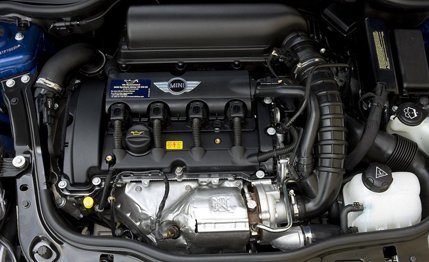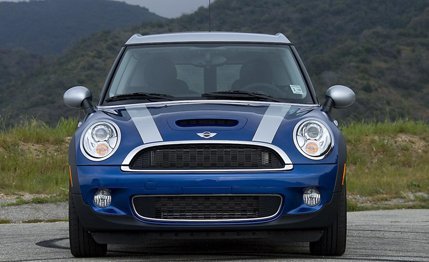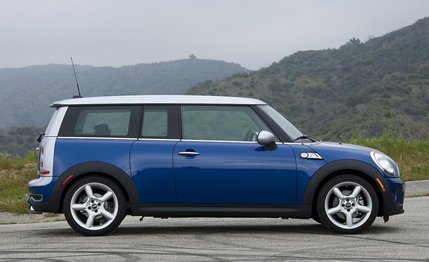 Road Test
Road Test


We have here a philosophical issue rooted in semantics. Webster’s New World tells us that “mini” refers to “something that is very small in size . . . especially as compared to others of the same kind.” The Clubman is the largest car ever to wear Mini logos, and it raises questions, such as: When does a Mini cease to be a Mini and become something else—a Midi, maybe? And what limits, if any, does a brand name impose on its products?
Mini faithful might argue that “compared to others of the same kind” is not possible because Minis are a breed apart, and in any case, the Clubman still ranks near the bottom of the dimension charts of cars for sale in the U.S.—only the Smart Fortwo is distinctly smaller. Still, there are many excellent subcompact hatchbacks that are similar in size and offer more room, some with a surprisingly high fun-to-drive index, all with much lower price tags (the Honda Fit, for one).

To this, the faithful might respond, “Yeah, but the Clubman will blow their doors off.” No argument there. At 2856 pounds, the Clubman S is 234 pounds heavier than the last Cooper S we tested [“Power Toys,” May 2007], but it’s still capable of scooting to 60 mph in 6.8 seconds. That’s 0.6 second slower than the standard Cooper S, but a Honda Fit requires almost nine seconds to achieve mile-a-minute velocity. We anticipate that the naturally aspirated Cooper Clubman would deliver similar results: not quite as quick as the three-door Cooper, but quicker than the Fit or other subcompacts.

So, it’s about quickness, with added cargo or people capacity. As well as agility. But if the idea is expanded interior volume with a respectable power punch and the moves of a world-class welterweight, there are rides that will get those extra passengers and/or cargo from A to B with more room, and in more haste, for about the same money. The Mazdaspeed 3 (base price $22,975, 0 to 60 in 5.4 seconds, max cargo of 43 cubic feet) comes to mind.
What the Mazdaspeed 3 and others—Subaru WRX, VW GTI, for example—lack, though, is cuteness. Make that cuteness with attitude. It’s the character trait that made the original British Mini—particularly the Cooper and Cooper S—a hit back in the go-go Sixties, and it’s also at the core of BMW’s successful Mini resurrection. The question is: Just how big can something get before cuteness fades? (If you know the answer to this question, Macaulay Culkin would like to hear from you.)
This expansion—call it the elastic Mini phenomenon—is not without precedent. In the heyday of the original, there were several variants: the Austin Mini Seven Countryman, the Morris Mini Traveller, and the Jeep-like Mini Moke. In 1961, a quarter-ton pickup joined the lineup, followed a year later by a Mini Van, a panel van with Morris badges.

And, of course, there was a Clubman, from 1969 to 1980—you didn’t really think that name sprang from the brow of someone named Wolfgang, right?—and a Clubman Estate. Its maker, BMC, sought to elevate the Estate above the other variants with the option of genuine wood trim on the exterior, though the execution left a bit to be desired as the wood was simply glued to the body panels.
What almost all those variations had in common was the brilliant front-drive architecture of the original 1959 Mini, on a wheelbase stretched by about four inches and with a body shell lengthened by about 10 inches. In the spirit of repetitive history, these are very similar to the increases that went into the creation of the modern Mini Clubman. So, with that precedent, you may wonder why we’re skeptical about this latter-day stretch job.
Just this: Even with an extra 10 inches of sheetmetal, a first-generation Mini Clubman was only some 130 inches long, which still seems to be within Webster’s definition of mini. But the new one is something else.

Dimensions. Creating this “unique shooting brake,” as it’s called in the company literature, entailed lengthening the wheelbase 3.2 inches, to 100.3, and a 155.8-inch wagon body, 10.2 inches longer than the standard Mini, according to the manufacturer, and at 56.4 inches, the Cooper S Clubman is also an inch taller than its three-door counterpart.
From the front bumper to the B-pillar, the Clubman’s sheetmetal is the same as the standard Mini’s. The new bodywork was added from that point aft, culminating in a squared-off stern. You don’t need a tape measure to perceive the benefits of the expansion, in part because the design team thoughtfully installed a rear-hinged demi-door, officially, the “Clubdoor”—replete with a seatbelt, on the right side of the car (remember the old Saturn coupe?)—the better to eyeball the rear-seat space and, if so inclined, climb right in there.